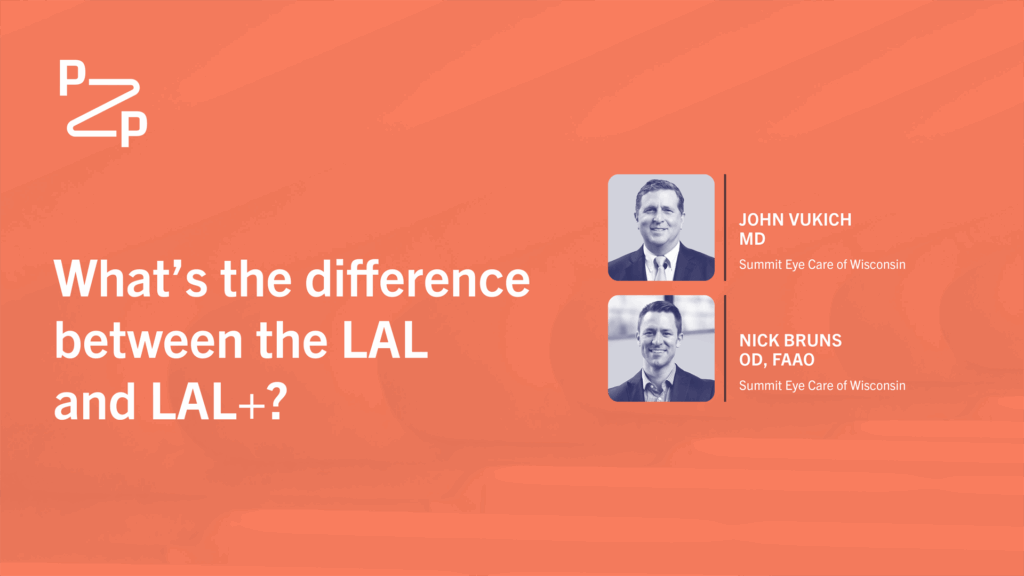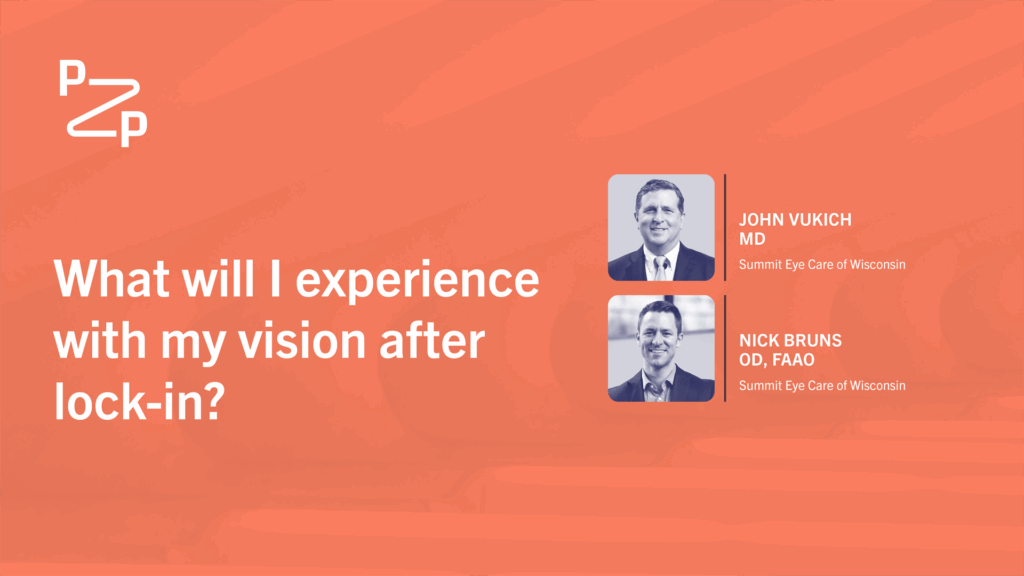For the Light Adjustable Lens™ (LAL®/LAL+®) from RxSight®, the first light treatment with the Light Delivery Device™ (LDD™) is the most important visit in the whole process. This is our first step and sets the trajectory for the remaining journey with the Light Adjustable Lens. About 90% of my patients will elect some sort of blended outcome. I avoid the term monovision because it implies the eyes are functionally independent. Patients may have tried monovision in their contact lenses with poor success, but end up doing very well with blended vision. The Light Adjustable Lens is designed with a certain amount of asphericity, which means we don’t have to induce as much anisometropia to achieve functional near vision – preserving stereopsis. This is even more true with the LAL+, more on this in a later piece (or check out the LAL vs LAL+ webinar). Our goal is functional range, but I certainly expect there will be a need for reading glasses for small print or for extended tasks.
The following video provides examples and key talking points for discussing blended vision with patients.
Assuming they choose blended vision, I give them three big instructions as they leave on the day of first light treatment:
- Continue PF ATs at least QID: Your patient’s eyes may feel a little dry, or their vision may fluctuate.
- DO NOT compare the two eyes: If you’re reading this, you’re familiar with the “refractive salute.” Your patient is moving their hand back and forth, comparing the right and left eye, looking for the subtlest of differences. We’ve intentionally made the eyes different, but they work best as a team. That’s like asking me to throw a baseball with my left hand (I’m a righty)—it’s going to look terrible and probably wouldn’t make it more than a few feet. Now, do I notice my left hand is inferior to my right during everyday tasks? Of course not… only when I isolate them.
- Avoid readers if possible: Readers are a crutch. If we’re trying to improve uncorrected NVA, using readers all the time won’t allow for effective feedback. Avoiding readers also aids in neural adaptation.
While the first light treatment is the most important, the second is my favorite – the patient has seen the magic of the Light Adjustable Lens! They’ve noticed the change and are “test-driving” their vision in real life. The most common complaint is that though near vision is better, it’s not yet perfect – that’s ok, and usually by design! Going back to our golfing analogy in a previous blog, the goal was to get the ball close to the hole, not blast it all the way into the sandtrap on the other side of the green… it’s very hard to recover from that shot (ask me how I know).
Top priority: We have to nail the dominant eye. With the Light Adjustable Lens, that’s lower-hanging fruit. The non-dominant eye is a moving target, and matching that to the patient’s individual goals while preserving binocular summation is the true art to achieving positive surgical outcomes.




